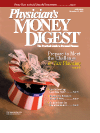Review Appealing International Valuations
How valuable are international equities?Detractors assert that currency fluctuationsand close correlations to US stockshave made investing overseas obsolete,and that foreign market returns are unimpressivecompared to US offerings.
Standard Global Valuation
However, international investments outperformedUS investments for most of the '60s, '70s, and '80sbased on the S&P 500 and the Morgan StanleyCapital International-Europe, Australasia, and FarEast (MSCI-EAFE) Index. Additionally, in the past 30years, the directions of foreign markets have not allmoved in lock step with the United States. By combiningforeign and US stocks, a physician-investor'soverall portfolio is more diversified and less volatile.
Recent data reviewing price/cash earnings (P/CE)ratios suggest that overseas stocks are inexpensive ona relative and absolute basis. P/CE ratios are significantly lower in Europe, parts of Asia, and emergingmarkets than they are in the United States primarilybecause US equities substantially outperformed internationalequities in the 1990s.
At an aggregate level, analysis of price as a multipleof cash earnings provides a superior value measurementto that of price to earnings. Cash earningsare a firm's cash revenues less cash expenses, whichexcludes the costs of depreciation. While the P/CEratio does not reflect a company's capital expenditureneeds, it is not distorted from the accountingdifferences between countries and industries. If theP/CE is 50 in 1 market and 5 in another, investors getmore "bang for their buck" in the market with thelower valuation.
Using Valuation Tools
Based on the concept of mean reversion, the currentP/CE ratio can be used to determine how far amarket is from "normal," providing some helpfulmarket valuation calls over the past 20 years.Compute a "z-statistic" to see how many standarddeviations the current P/CE is relative to its historicalaverage. To calculate the z-statistic, subtract the currentmonth's value from the historical average andthen divide the difference by the standard deviation.The z-statistic is the number of standard deviationsaway from the historical average for that ratio in aparticular country. One standard deviation coversabout 67% of a normal distribution and 2 deviationscover about 95%. The more deviations, the greaterthe risk is of a hard and fast fall.
A review of average P/CE performance in theUnited States from 1975 to date indicates that, at thetime of the 1987 US market crash, the P/CE z-statisticexceeded 2 standard deviations. In 1999's tech bubble,the US P/CE z-statistic exceeded 3 standard deviations.The collapse of the tech bubble should havebeen no surprise to investors.
Note:
Today, the US P/CE z-statistic indicates that the USmarket is still vulnerable for further corrections. A subtle,more powerful statement is illustrated by observingthe "grade inflation" in the P/CE average statistic. The historical average has increased from lessthan 6 in the mid-1980s to over 10 currently. The z-statisticis likewise inflated since the current month isbeing compared to a higher and higher average. As ofMay 2003, the P/CE ratio of the MSCI-USA index was12.6, as compared to 7.5 for emerging markets.
Beyond Basic ValuationThe P/CE ratio is just 1 statistic on 1 country.Polaris' global valuation model incorporates 5 factorsfor 44 countries to gauge the best values in theworld. When screening individual company data,investors can use another criterion, the Polaris CapitalGlobal Cost of Equity. When applied to a databaseof 20,000 companies, it helps determine thebest absolute values in the world.
The global cost of equity directly addresses thecash flow of a company relative to interest rates, inflation,and foreign currency risk. Multiple valuationdevices can help physician-investors to unearth worldwidebuying opportunities.
Bernard R. Horn, Jr, is president and portfoliomanager of Boston-based Polaris CapitalManagement. He welcomes questions or commentsat 617-951-1365 or bhorn@polariscapital.com, or visit www.polariscapital.com.
